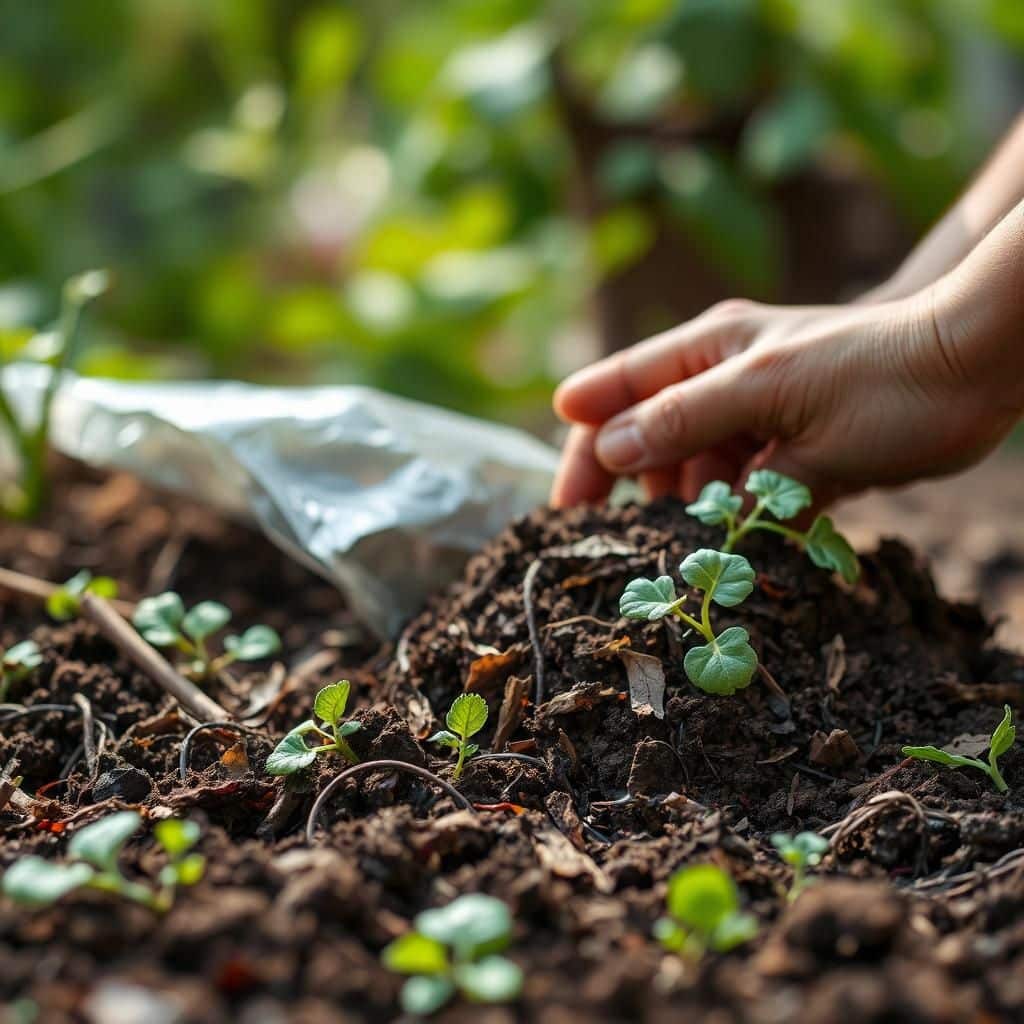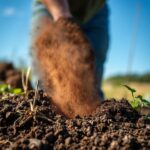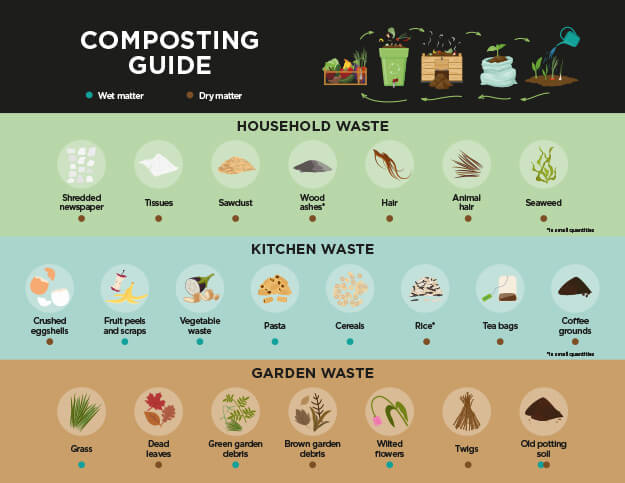Is There a Wrong Way to Compost? Debunking Common Misconceptions and Best Practices

Composting is an eco-friendly practice that transforms organic waste into valuable soil enrichers, yet many people hold misconceptions about the process. These misunderstandings can lead to ineffective composting, discouragement, or even negative environmental impacts. In this article, we will debunk common myths surrounding composting, shedding light on both the do's and don'ts of this sustainable practice. By clarifying best practices and addressing common pitfalls, we aim to empower both novice and seasoned composters to maximize the benefits of composting while minimizing mistakes. Join us as we explore the right way to compost and promote a healthier planet.
Is There a Wrong Way to Compost?
Composting can be a simple and effective way to recycle organic waste, but there are indeed wrong methods that can lead to poor results or even unwanted consequences. One common mistake is failing to maintain the right balance of green (nitrogen-rich) and brown (carbon-rich) materials, which can result in a smelly pile that attracts pests instead of decomposing properly. It's also crucial to ensure aeration and moisture levels are appropriate; too much moisture can create a soggy mess that stinks, while too little can slow down the decomposition process. Additionally, including certain materials such as meat, dairy, or oily substances can introduce pathogens and odors, making the compost not only ineffective but potentially hazardous. Understanding these common pitfalls is essential for successful composting.
1. Understanding Green and Brown Materials
To achieve successful composting, it's vital to understand the difference between green and brown materials. Green materials, such as grass clippings and vegetable scraps, are high in nitrogen and help provide the necessary nutrients to the compost. In contrast, brown materials, like dried leaves, paper, and straw, offer carbon, which is essential for the decomposing microorganisms to thrive. The ideal compost pile should have a ratio of approximately three parts brown to one part green material to ensure optimal decomposition and a balanced nutrient profile.
2. Maintaining Moisture and Aeration
Proper moisture and aeration are critical for an efficient composting process. A compost pile should be kept moist, similar to a damp sponge, but it shouldn't be drenched, as excess water can lead to a soggy environment that hinders aerobic decomposition. Furthermore, aeration is vital; turning the pile regularly allows oxygen to circulate, thereby promoting the activity of aerobic microorganisms. Without sufficient oxygen, anaerobic conditions prevail, which can lead to unpleasant odors and slow down the composting process significantly.
3. Avoiding Certain Materials
It's important to be selective about the materials added to a compost pile. Certain items like meat, dairy products, and oily substances can create unwanted odors and attract pests, making your compost pile undesirable. Furthermore, these types of materials can introduce harmful pathogens into the compost, which can be detrimental when it comes time to use the compost in a garden or around other plants. Stick to plant-based materials and avoid those that are animal-based to ensure a clean and effective composting process.
4. Monitoring Temperature
The temperature of a compost pile plays a significant role in the decomposition process. A well-managed compost pile can heat up significantly, often reaching temperatures of 130°F to 160°F (54°C to 71°C), which is ideal for eliminating pathogens and weed seeds. It's important to monitor the temperature of the pile regularly; if it drops too low, it may indicate that there is a lack of nitrogen or moisture. Conversely, if the pile gets too hot, it may be too dry and in need of water or additional materials.
5. Timing and Patience
Composting is not a rapid process, and understanding the timeframe involved is essential. Different materials decompose at various rates, and the composting process can take anywhere from a few weeks to several months, depending on factors such as aeration, moisture, and environmental conditions. Rushing the process or expecting immediate results can lead to frustration and potential mistakes. Patience is key; by allowing the compost to mature properly, you will produce a richer and more nutrient-dense final product.
| Key Aspect | Importance | Common Mistakes |
|---|---|---|
| Green Materials | High in nitrogen | Too few greens |
| Brown Materials | High in carbon | Too many browns |
| Moisture Level | Supports microbial activity | Over or under-watering |
| Aeration | Prevents anaerobic conditions | Lack of turning |
| Material Selection | Ensures a healthy compost | Adding meat or dairy |
How can composting go wrong?

Composting can be a highly effective way to recycle organic waste and create nutrient-rich soil. However, there are several ways that composting can go wrong, leading to ineffective compost or unpleasant odors. Here are some of the main factors that can cause issues in the composting process:
Poor Aeration
When compost is not aerated properly, it can lead to anaerobic conditions. This happens when there is not enough oxygen in the compost pile, which is essential for the aerobic bacteria that break down organic material. Poor aeration can result in:
See also:
- Odors: A lack of oxygen can produce foul-smelling gases.
- Slow Decomposition: The compost takes much longer to break down.
- Pest Attraction: Unpleasant odors can attract rodents and other pests.
Incorrect Carbon-Nitrogen Ratio
The ideal carbon-to-nitrogen (C:N) ratio in compost should be about 30:1. If the ratio is off, either too much carbon or nitrogen can lead to complications. An incorrect C:N ratio may lead to:
- Excess Nitrogen: Too much nitrogen will create a slimy compost that is smelly.
- Insufficient Nitrogen: Too much carbon results in a dry compost that decomposes slowly.
- Imbalance: A lack of balance will hinder the growth of microbes necessary for decomposition.
Moisture Level Issues
Moisture is vital for successful composting, but both excess and insufficient moisture can hinder the process. Maintaining the right level of moisture can be tricky. Problems due to moisture levels can include:
- Too Wet: Overly wet compost becomes anaerobic and can smell bad.
- Too Dry: Dried compost can inhibit microbial activity and slow down decomposition.
- Crust Formation: Excess moisture can create a hard crust that limits airflow.
Wrong Materials Added
The materials used in composting play a crucial role. Certain items should be avoided or used in moderation, as they can introduce pathogens or toxins. Issues stemming from inappropriate materials include:
- Meat and Dairy: These can attract pests and result in odors.
- Chemically Treated Items: Items with pesticides can contaminate the compost.
- Weeds with Seeds: These can remain viable and propagate in the compost.
Insufficient Turning
Turning the compost pile is necessary for aeration and to ensure even decomposition. Failing to turn the pile can lead to problems such as:
- Layering: Material at the bottom may not break down while the top layer dries out.
- Hot Spots: Uneven heating can occur, causing some materials to decompose faster than others.
- Pest Issues: Without turning, pests can establish themselves in the compost pile.
What are the 5 mistakes that people commonly make when composting with worms?

1. Overfeeding the Worms
One of the most common mistakes in worm composting is overfeeding. Worms have a limited capacity to consume organic matter, and providing too much food at once can lead to several issues, including an increase in odors and attracting pests. Proper portion control is essential for maintaining a healthy worm composting environment. Consider the following tips on feeding your worms effectively:
- Start with small amounts and gradually increase.
- Observe worm activity to gauge how much they can eat.
- Remove uneaten food to prevent spoilage.
2. Using Inappropriate Materials
Using the wrong materials in your worm composting can lead to poor results. Not all organic waste is suitable for vermicomposting. Certain items can harm the worms or result in an unhealthy composting process. Here are some materials to avoid:
- Citrus fruits and acidic foods, which can lower pH levels.
- Meat, dairy, and oily foods that attract pests.
- Processed foods with additives that may be harmful.
3. Ignoring Temperature and Moisture Levels
Temperature and moisture are critical factors in worm composting, yet many beginners overlook them. Worms thrive in a specific temperature range and require adequate moisture to function properly. Failing to monitor these conditions can lead to stress or even death of the worms. Here are some considerations:
- Keep the compost bin between 55°F to 77°F (13°C to 25°C).
- Maintain moisture levels, similar to a damp sponge, but avoid waterlogging.
- Use a thermometer and moisture meter for accuracy.
4. Lack of Proper Aeration
Aeration is crucial in worm composting, as it promotes oxygen flow and prevents harmful anaerobic conditions. Many people make the mistake of not providing adequate airflow in the bin, leading to foul smells and unhealthy worms. To ensure proper aeration, consider the following:
- Incorporate materials such as shredded paper or cardboard.
- Poke holes in the compost bin for ventilation.
- Turn the compost periodically to mix and aerate.
5. Neglecting pH Balance
The pH balance of your compost is another aspect that can easily be overlooked. Worms thrive in a neutral pH environment, and deviations can affect their health and ability to break down organic material. To maintain appropriate pH levels, it is advisable to:
See also:
- Monitor pH levels with a pH meter regularly.
- Add crushed eggshells to neutralize acidity.
- Incorporate a variety of materials for better balance.
What is the rule for what to put into compost?

To successfully create compost, understanding what materials to include is essential. The main rule for what to put into compost can be summarized as the balance between greens and browns. Greens are nitrogen-rich materials, whereas browns provide carbon. Striking a proper balance between these components ensures that the composting process occurs efficiently. A general guideline is to maintain a ratio of about 1 part greens to 3 parts browns.
Understanding Greens and Browns
Greens and browns are key components in the composting process. Greens include any organic material high in nitrogen, while browns consist of materials high in carbon. Here are examples of each:
- Greens: vegetable scraps, grass clippings, and coffee grounds.
- Browns: dried leaves, straw, and cardboard.
- Importance: A balanced ratio promotes microbial activity, crucial for decomposition.
What to Add to Your Compost
When deciding on what to add to your compost pile, consider materials that are rich in nutrients and contribute positively to the composting process. Acceptable additions include:
- Fruit and vegetable scraps: These are rich in moisture and nutrients.
- Grass clippings: They break down quickly and are high in nitrogen.
- Shredded paper and cardboard: Excellent sources of carbon when shredded and balanced with greens.
What to Avoid in Composting
Certain items should be avoided as they can lead to problems in the composting process. These include:
- Meat and dairy products: They can attract pests and create odors.
- Oils and fats: These do not decompose easily and can disrupt the compost.
- Pesticide-treated materials: They can introduce harmful chemicals into your compost.
The Role of Microorganisms
Microorganisms play a vital role in breaking down organic materials in the compost pile. They thrive when the right balance of greens and browns is present. Their contribution includes:
- Bacteria: They are the primary decomposers that convert materials into compost.
- Fungi: Fungi help break down tougher materials like wood and paper.
- Worms: If present, they enhance aeration and promote the breakdown process.
Composting Techniques and Tips
To ensure effective composting, certain techniques can improve the process. Implementing these tips will optimize your composting efforts:
- Aeration: Turning your compost regularly adds oxygen and accelerates decomposition.
- Moisture control: Keeping the compost pile damp but not soggy is crucial for microorganism activity.
- Layering: Alternating layers of greens and browns can help maintain balance and promote efficient breakdown.
Questions from Our Readers
Is there a wrong way to compost?
While composting is generally a straightforward process, there are certain practices that can lead to poor results. Using the wrong materials, such as meat, dairy, or oily foods, can attract pests and create unpleasant odors. Additionally, failing to maintain the right balance of greens and browns can slow down decomposition.
What materials should I avoid when composting?
You should avoid composting meat, dairy products, oily foods, and pet waste, as these can attract pests and produce harmful bacteria. Diseased plants and weeds with seeds should also be left out to prevent the spread of these issues in your garden.
How can I tell if my compost is not working properly?
If your compost has a foul smell, is too dry or too wet, or if you notice pests or mold, it may not be working properly. A properly maintained compost should smell earthy and have a consistent texture.
See also:
What should I do if my compost is not heating up?
If your compost isn’t heating up, check for adequate moisture, oxygen flow, and a proper balance of greens and browns. Insufficient nitrogen or excessive dry materials can hinder the heating process. Turning your compost pile can also help aerate it and encourage microbial activity.
https://youtube.com/watch?v=q7gB4DgXZqw
If you want to read more articles like Is There a Wrong Way to Compost? Debunking Common Misconceptions and Best Practices, we recommend you check out our Compost category.
Leave a Reply
Related Articles